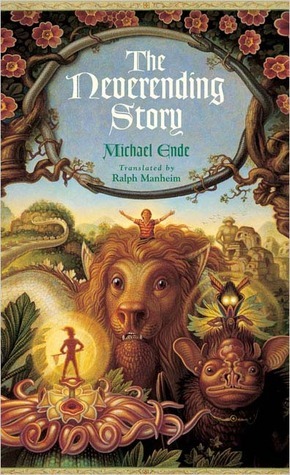 |
| [Image by Vassil, Public Domain] |
Today I’m continuing with the Blogging from A-Z Challenge hosted by Arlee Bird and his team of awesome bloggers. My theme is: Elements and features of speculative fiction and entertainment. So throughout April I will be blogging about characters, objects and themes that appear in sci-fi, fantasy and dystopian series. Today’s post is all about Quests.
Quests have featured in the mythology and legend of many cultures for centuries and are used frequently as a plot device in fantasy literature. The hero must embark upon a difficult journey (whether literal or metaphorical) to reach a goal or claim a prize of some kind. Usually they must travel a great distance in order to do so, with some allies accompanying them. This allows the author to describe interesting and exotic scenery (mountain rages, caves, turbulent oceans etc.) and showcase different cultures and perhaps fantasy creatures that inhabit these places.
It also allows the author plenty of time to describe the hero’s development of their skills and personality. Often quest plots are a form of bildungsroman (coming-of-age story) where the hero makes a noticeable transition from youth to adulthood during the journey. The hero and his companions will encounter many obstacles along the way which test their character, but usually by the end of the novel they prove themselves worthy and are able to reach their goal.
The goal that the hero seeks is often a magical object of some kind, that either rightfully belongs to the hero or is of great value to society in general. One famous example is the quest for the Holy Grail, in which numerous knights (including Sir. Lancelot and Sir.Gallahad) seek to find the legendary chalice which Christ drank from at the Last Supper. Another example is Jason and the Argonaut’s quest to find the Golden Fleece.
Sometimes, however, the object is something so powerful and dangerous that the hero wishes to find and destroy it before it can be used by evil. This is the case in Harry Potter and the Deathly Hallows, when Harry, Ron and Hermione seek to locate and destroy all of the horcruxes and in The Lord of the Rings, where Frodo and ‘the Fellowship of the Ring’ embark on a quest to return the one ring to the flames of Mount Doom in Modor. In both novels the objects can only be destroyed using a difficult method and they both cause spiritual or psychological torture to the person safeguarding them. Tolkien and Rowling both use these devices to tell a meaningful story of friendship and the struggle against temptation against a background of supernatural warfare.
Occasionally the goal is not an object but something else which the hero needs or desires. in The Wonderful Wizard of Oz, Dorothy only wants to go home, and her companions seek personality traits like brains, a heart and courage. In stories like Dick Whittington and some Dickens novels, the main characters are set out to ‘seek their fortune’, which can mean to achieve wealth and success, or to discover their destiny and place in life.
What is your favourite quest story? Have you ever been on a journey that you would consider a quest?








One of my favorite quest stories is The Goonies- I used to watch this movie over and over again when I was a kid.
I like the idea of quests. It makes life seem like more of a challenge.
I had to go on an epic quest of my own today; passing swiftly and unseen through the forbidden lands of Naboro, climbing the steep and treacherous slopes of Mount Fencha (and descending on the other side) and finally unlocking the towering gates of Bakadora to reach safety on the other side!
In other words, I got locked out of the house and had to sneak through the neighbours backyard, climb the fence, and get into the house through the back door (which I luckily had the key for). It felt like an epic quest at the time…..